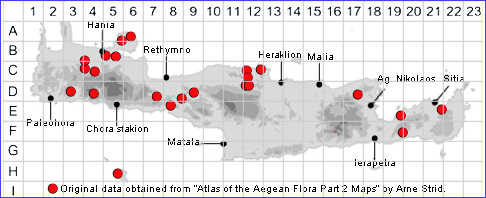SPECIES DESCRIPTION
CYTINUS RUBER
Family and Genus:- See- CYTINACEAE
Common Names:- Red cytinus.
Homotypic Synonyms:- Cytinus clusii, Cytinus hypocistis subsp. clusii,
Cytinus hypocistis var. kermesinus, Cytinus hypocistis subsp. kermesinus,
Hypocistis hypocistis var. kermesinus Hypocistis kermesina, Hypocistis rubra
Meaning:- Cytinus. Meaning unknown.
Ruber (L) Red, reddish.
General description:- A low parasitic perennial with no chlorophyll. Stem short
with fleshy overlapping scales, orange or yellow.
Stem:-
1) Up to 12 cm, rarely longer.
Leaves:-
1) scale-leaves, and bracteoles deep crimson or bright red;
2) Perianth, c.12-15 mm, slightly exceeding the bracteoles, ivory-white or pale pink.
Flowers:-
1) Perianth c. 12-15 mm, slightly exceeding the bracteoles, ivory-white or pale pink.
joined together by 5 to 10 in fleshy clusters initially covered in pointed scales
of a bright red.
2) Calyx, with 4 petaloid sepals toothed on edges.
3) Male flowers, with 8 stamens forming a central small column and located above
the female flowers which have 1 style.
Fruit:-
1) Fleshy white berries.
Key features:-
1) Perianth, white or pale pink.
2) Fruit, white.
Habitat:- Rocky slopes with open dry shrubby vegetation and open coniferous
woodland. 0-700 (-1050) m. Parasitic on Cistus creticus.
Distribution:- Widespread across the Mediterranean region and through Anatolia to
georgia. Limited distribution on Crete, not common.
Flowering time:- Apr-May.
Photos by:- Steve Lenton
